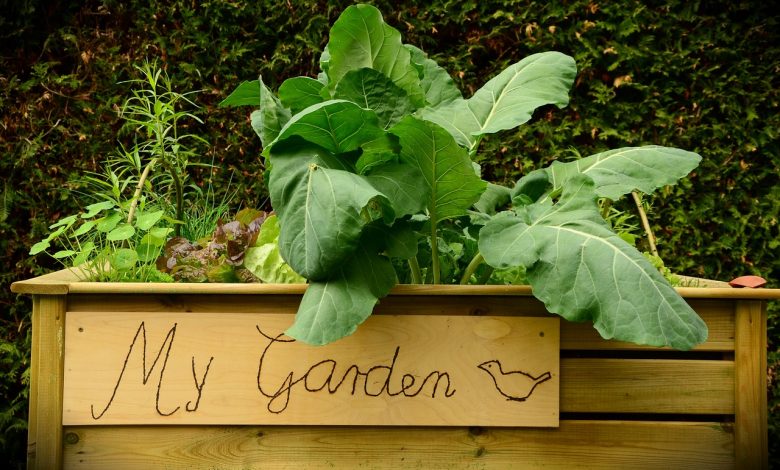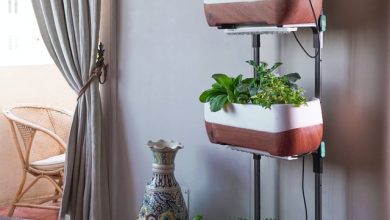Raised Gardens: What You Need to Know

While it will be aesthetically pleasing, there’s more to a garden bed than what meets the eye. A raised garden is a gardening technique wherein you will grow plants enclosed in elevated containers. Though we have a lot of modern techniques now, this form of gardening dates back thousands of years, as our ancestors were doing it even before we started to truly understand gardening and how effective it would be. This practice is suitable for growing flowers and vegetables in small plots. It is also compatible with companion planting and the foundation of square foot gardening.
The plant containers are placed on top of soil or even a hard surface like your driveway and can be made of bricks, wood, plastic or galvanized steel. The savvy materials are endless. For starters, you have the option of buying a ready-made kit or simply constructing your very own, the latter being the reason why you’re here.
The Advantages

Save Money & Time
First of all, it will save you money and time. Traditional gardening is more expensive and risky due to the tools and fertilizer required, which could lead to unknown results. Not that you will spend zero on tools or fertilizer if you have a raised garden, but raising your garden is more on the safe side. This type of gardening is highly recommended for novices for this reassuring attribute.
No Tilling Required
You can save yourself from the grueling task of tilling. You can just add the soil into the container, and that’s it. You are no longer required to break the ground now and then to prevent compacting. No need to invest in a tiller anymore, which brings us back to the first advantage – you will save money!
Easy Soil Maintenance
It will be easier to maintain your soil as well. Since your garden is contained, you can quickly bring in quality soil from somewhere else. It is more efficient that way, so going back to bullet one, you will save time. And time is money.
Fewer Aches and Pains
Gardening is no joke. Aside from the mental agony of waiting for a bountiful harvest, gardening is physically exhausting. At the end of the day, you could use a massage. You will experience almost all types of body pain: back, shoulder, and of course, neck pain. With a raised garden bed, you can say goodbye to the pains of yesterday. Since it is raised, you get to decide the height of your garden, alleviating the need to duck into uncomfortable tending poses.
Fewer Weeds
Plants growing in your elevated garden are safer from stubborn weeds and grasses, especially if the kit or the bed you have constructed has bottom protection. There is also a good chance that the soil you purchased is different than the earth around your house. This means the weeds in your area can’t co-exist with your beautiful garden plants. Unless, however, your quality soil came with weed seeds as an add-on. Develop a keen eye and make sure your raised garden soil is weed-free.
No Need for Herbicides
Since your garden is weed-free, you will save money. There is no need to invest in chemical herbicides to get rid of them anymore.
Now that you said goodbye to herbicides, your plants will be purely organic and chemical-free. Your fruit will be totally fresh, safe, and healthy.
Roots Grow Quicker
Plants in containments closer to the ground grow roots faster. Going back to number one, you save time. Also, knowing the measurements of your containers, quality, and quantity of soil therein will give you the confidence that the roots will develop properly. You have an estimate that there is enough space for roots to grow to its potential, unlike the traditional backyard growing. The drainage is also more natural.
Plants that were grown in a raised garden bed can look better, healthier, and can have expedited harvest times. And these factors are equivalent to higher yields.
Less Damage to Plants
Soil compaction is one of the challenges a gardener usually contemplates about. Worry no more because there is less soil compaction in raised garden beds. You can even create a shelter garden bed to offer even more protection from heavy rain and roaming children and pets.
Plants and soil aren’t the only items contained in a raised garden bed, but also the nutrients and structure. After a heavy rain, you will just see raindrops on your plants. The appearance of the bed and the arrangement of your plants will be as is. Nothing will get blown over or moved during a massive storm since they are so well protected.
Save Space
Installing raised garden beds saves space. You can maximize your yard, as you can plant more crops together. You also have the option to group them together according to type, size, and color. The uniformity shall look pleasing.
Ideal for Urban Dwellers
Raised garden beds are ideal for those living in the urban area. Most of the time, soil in urban areas is contaminated. To start gardening, you can just put your containers on top of some landscape fabric. Imagine having a source of edible and fresh vegetables regardless of the contaminated soil in your area.
The Disadvantages

Reading the advantages, we bet you’re currently thrilled to build your raised garden by now. However, brace yourself. While it’s great to know about the winning aspects, we need to weigh the cons too since this is a considerable investment – not only of time and money, but also your effort. The downsides to raised garden beds are as follows:
Dehydration
The circulation of sun, air, and water might be easier, but beware during summers. The efficient distribution of drainage and heat can cause dehydration and stress to your plants. Seeing your plants suffer like that will surely stress you out as well.
Upfront Investment
Who doesn’t want to build a raised garden bed which will last for years on end? This dream will, of course, require investing in durable materials such as stone, bricks, and high-quality lumber for the frames. And it doesn’t end after the construction phase. Consider the repairs and maintenance every now and then. It’s just like gardening itself. It doesn’t end in burying the seeds alone and watering it. You have to nourish the plants until they are finally ready. You also have to invest in the future so the raised garden beds are prepared for the next crops.
Increased Risk of Disease
While raised garden beds can accommodate more plants, plants that stay together shouldn’t always stay together. This can deprive air circulation for some plants. They can be more prone to diseases as well. Since they are close together, the disease can quickly spread to one another, decreasing your projected yield.
Need To Water More Often
Soil can heat and dry much faster during summers and cools down rapidly in the fall. More watering would be required. It will be challenging to install drip irrigation too, so you will end up doing the traditional way of watering the plants by hand. If this is a dealbreaker, you might want to consider having a sunken garden instead.
Moving A Raised Garden Is Challenging
Moving a raised garden beds can be a tiresome and challenging chore. You have to disassemble the container, and don’t forget about the amount of soil in it. Of course, all of this can be avoided by planning for the future and installing the raised garden bed in its “forever” home.
If the downsides haven’t dampened your spirit and you are still ready to build a raised garden bed, then let’s proceed to the most-awaited part. How do you plan and make one then?
Building Your Own Raised Garden Bed

Choose A Good Width
To make easier access for planting, digging, and weeding, raised garden beds should be typically around three to four feet wide and six to eight feet long. This will also eradicate the risk of compacting the soil. There is no maximum height, though. You can even build one up to your waist. Prepare items such as water bottles or cans to fill the space, then proceed in filling the bed with your top-grade soil.
Pay attention to the bed’s width. It shouldn’t be so wide that you can no longer tend your plants in the middle part. The purpose of these raised garden beds is for you not to bend your back any longer.
Location, Location, Location
Location is critical. Your backyard isn’t the only option. You can garden in your front yard, side yard, driveway, or former garage. Just ensure your plants will have enough sunshine and air in the chosen location. Too much of anything is terrible, though. Check for possible sun and wind overexposure, which can destroy your plants.
Ensure You Have Enough Soil
If you are planning to turn your driveway, garage, or any other hard surface into a raised garden, ensure that the soil will be deep enough for root growth. This is especially true if you will be planting carrots or similar vegetables, as you don’t want your carrots or onions reaching a dead-end before they have become fully grown. Having a soil depth of around ten to twelve inches is recommended.
Plan For The Future
Whether it’s your backyard, front yard, side yard, driveway, or former garage, you might want modifications in the future. Don’t just build the raised garden right away. Plan a theme and structure accordingly. Make it go well with your house’s design. Having a visually appealing garden will add a nice touch to your property. We find that sketching your plan helps to make sure you get your garden just right.
Choose The Best Design For You
There are so many raised bed designs out there lately. You might want to consider having a:
- Built-in brick beds
- Sheet metal raised beds
- Square foot raised beds
- Herb spiral
- Hoop house raised bed
- Raised bed border
- Trough garden
- Custom design raised beds
- Raised bed arbor
- Tiered raised beds
- Milkcrate garden
You can also create a garden at eye-level or just terracing a yard slope. These are only a few, and we could go on. But at the end of the day, it will depend upon your resources, available time, and – if the design suits your taste – working conditions, and lifestyle.
How To Convert A Grassy Area Into A Raised Garden
If you have a grassy area that you want to convert to a garden, but getting rid of the grass is not on your to-do checklist for the day, simply get cardboard and cover the weeds. Then, cover the cardboard with soil. Otherwise, you may also use landscape fabric.
Plan Your Irrigation
Irrigation should be installed before the completion of the containers, as it is a lot easier than waiting until the soil is in place. Looking into the future comes in handy once more. Installing an irrigation system prior to the completed beds allows you to run pipes or hoses underneath and around it. It will be hard to tweak the system once the raised beds are all set.
Determine The Best Soil Type
Think thoroughly about the soil that you will use. Is it clay? Sand? Loam? Have you checked the soil pH and organic matter volume? You can order triple mix from your trusted supplier and top it off with organic compost. Some businesses selling topsoil don’t offer triple mix, so you can make your own. Just mix equal parts of vermiculite or perlite, peat, organic compost, and ground limestone, which will complement the acidity of the former items.
Choose The Best Building Materials
Also, consider the materials to be used for the raised bed itself. Cedar, redwood, and hemlock should be useful because these don’t rot quickly. Experienced gardeners have even used the beds for years. Avoid pressure-treated lumber at all costs – they are usually toxic. You don’t want your plants rotting away with your wooden bed, forcing you to return to square one.
If you are unsure of the wood quality, you can put a heavy plastic liner between the wood frames and the soil. Place it with care to avoid wear and tear.
If you can allocate some budget, you might want to consider having stone beds. Stone is more of a permanent setup. Moving and re-arranging your garden in the future will be a pain, unlike wooden beds, which you can just disassemble and carry with ease.
Think About The Path
To complete your garden’s overall look, consider what the paths between the garden beds will be composed of? Do you prefer wood chips? Dirt? Are you going to invest in gravel? Ever considered grass?
Maintenance

Replenish the Soil
Make sure to replenish the beds with additional soil compost or organic nutrients now and then. This is applicable even though you are not gardening at the moment. Check for any existing weed seeds.
Rotate Your Crops
Rotate crops every year. It is never a good idea to plant the same crops in the same beds because pests and diseases can hibernate. Also, a change of view from time to time won’t hurt.
Prevent Shifting
To avoid your beds from shifting, you may stake the sides. In-line braces should go midway. This is proper preparation in case of heavy rains.
Choose The Best Manure
Chicken manure as compost is an excellent option, unlike cow manure. If you’re not careful, cow manure can have weed seeds and insect eggs on it, things that you never want to share with your beloved plants.
Watering
Raised garden beds drain well, so more watering is required. If you have installed irrigation like the drip one, it will be useful for you and your plants. If you live in a tropical area, be careful of using overhead watering. It’s not an ideal option for you because it may lead to plant diseases.
Watering shouldn’t be per square foot of soil. Since the plants are together, some might not get sufficient water if watering is done per square foot. Always remember that it should be per plant.
Mulch it Up
Since the beds drain well, experienced gardeners recommend mulch. Compost, newspaper, wood chips, bark, and straw can do the job. Pine needle mulch is also a solid choice. Hay mulch is okay; however, it has been reported to contain seeds that can quickly grow into weeds that will invade your beds.
Prevent Pests
Going back to the basics, prevent your plants from burrowing animals such as moles. Lay down pre-cut wire mesh or hardware cloth at the bottom of the bed, and cut the corners so you can fit it around the corner posts. You may also install netting for flying animals, such as insects and birds. We love animals; however, some of them can be a little too bold for our liking. There are many ways to repel them without hurting them.



